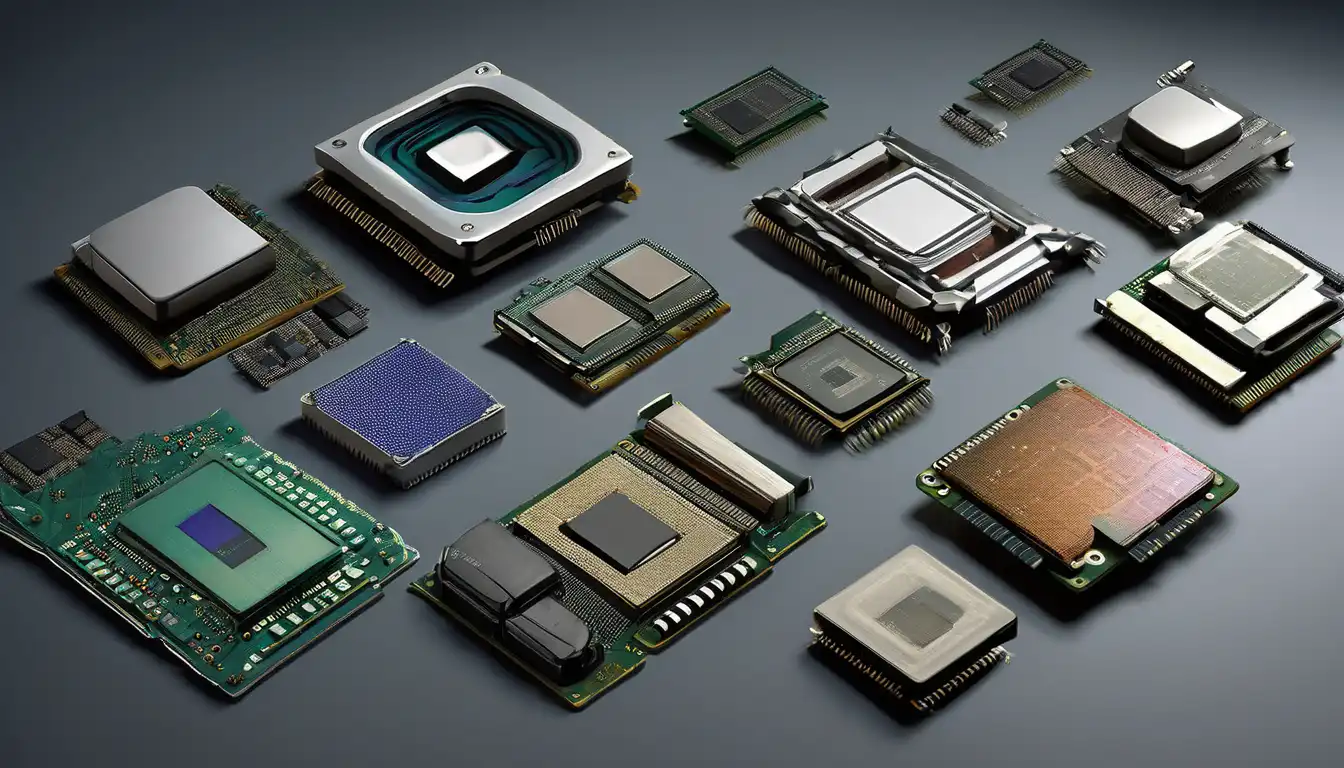The Dawn of Computing: Early Processor Technologies
The evolution of computer processors represents one of the most remarkable technological journeys in human history. Beginning with primitive vacuum tube systems in the 1940s, processors have undergone revolutionary changes that have fundamentally transformed how we live, work, and communicate. The first electronic computers, such as ENIAC, utilized thousands of vacuum tubes that consumed enormous amounts of power and required constant maintenance. These early systems operated at speeds measured in kilohertz and occupied entire rooms, yet they laid the foundation for the digital revolution that would follow.
The Transistor Revolution
The invention of the transistor in 1947 marked a pivotal moment in processor evolution. Developed at Bell Labs by John Bardeen, Walter Brattain, and William Shockley, transistors replaced bulky vacuum tubes with smaller, more reliable semiconductor devices. This breakthrough enabled computers to become smaller, more efficient, and more affordable. The transition from vacuum tubes to transistors represented the first major leap in processor technology, reducing power consumption while dramatically increasing reliability and performance.
The Integrated Circuit Era
The 1960s witnessed another revolutionary development with the creation of the integrated circuit (IC). Jack Kilby at Texas Instruments and Robert Noyce at Fairchild Semiconductor independently developed methods for integrating multiple transistors onto a single silicon chip. This innovation allowed for the creation of complete electronic circuits on tiny semiconductor wafers, paving the way for the modern microprocessor. The integrated circuit era saw processors becoming increasingly complex while simultaneously shrinking in physical size.
The Birth of the Microprocessor
In 1971, Intel introduced the world's first commercially available microprocessor, the 4004. This 4-bit processor contained 2,300 transistors and operated at 740 kHz, representing a monumental achievement in miniaturization. The 4004 demonstrated that complete central processing units could be manufactured on single chips, making computing power accessible to businesses and eventually consumers. This breakthrough marked the beginning of the personal computer revolution and established Intel as a leader in processor technology.
The x86 Architecture Dominance
Intel's 8086 processor, introduced in 1978, established the x86 architecture that would dominate personal computing for decades. This 16-bit processor featured 29,000 transistors and became the foundation for IBM's Personal Computer in 1981. The x86 architecture's backward compatibility allowed software to run on successive generations of processors, creating an ecosystem that propelled Intel to industry leadership. Throughout the 1980s and 1990s, processors like the 80286, 386, and 486 continued to push performance boundaries while maintaining compatibility with existing software.
The Pentium Era and Performance Explosion
The introduction of the Pentium processor in 1993 represented another quantum leap in processor technology. With 3.1 million transistors and superscalar architecture, the Pentium could execute multiple instructions per clock cycle, dramatically improving performance. This era saw intense competition between Intel and AMD, driving rapid innovation and price reductions that made powerful computing accessible to millions. The Pentium family evolved through multiple generations, each offering significant improvements in speed, efficiency, and multimedia capabilities.
Multi-Core Revolution and Parallel Processing
By the early 2000s, single-core processors were approaching physical limits in clock speed due to heat dissipation constraints. The industry responded by shifting to multi-core architectures, where multiple processor cores were integrated onto a single chip. This approach allowed for continued performance improvements through parallel processing rather than simply increasing clock speeds. Dual-core, quad-core, and eventually processors with dozens of cores became standard, enabling computers to handle multiple tasks simultaneously with unprecedented efficiency.
Specialized Processors and Mobile Revolution
The rise of smartphones and mobile devices created demand for processors optimized for power efficiency rather than raw performance. Companies like ARM developed reduced instruction set computing (RISC) architectures that consumed significantly less power while delivering adequate performance for mobile applications. This shift led to the development of system-on-chip (SoC) designs that integrated CPUs, GPUs, memory controllers, and other components onto single chips. The mobile processor revolution demonstrated that different computing applications required specialized processor architectures optimized for specific use cases.
Modern Processor Technologies
Today's processors incorporate advanced technologies like artificial intelligence acceleration, quantum computing research, and neuromorphic computing. Modern CPUs feature billions of transistors, advanced manufacturing processes measured in nanometers, and sophisticated power management systems. The integration of machine learning accelerators and specialized AI cores represents the latest evolution in processor design, optimizing hardware for emerging computational workloads. Companies continue to push the boundaries of what's possible with silicon-based computing while exploring alternative materials and computing paradigms.
The Future of Processor Technology
Looking ahead, processor evolution continues at an accelerating pace. Quantum computing promises to solve problems that are intractable for classical computers, while neuromorphic processors aim to mimic the human brain's efficiency. Advances in materials science, including graphene and other two-dimensional materials, may eventually replace silicon as the foundation for future processors. The ongoing miniaturization of transistors faces physical limits, driving research into alternative computing architectures that could sustain Moore's Law beyond the silicon era. The evolution of computer processors remains one of the most dynamic areas of technological innovation, with implications for virtually every aspect of modern life.
The journey from room-sized vacuum tube computers to pocket-sized supercomputers demonstrates humanity's remarkable capacity for innovation. Each generation of processors has built upon the achievements of its predecessors while opening new possibilities for computation. As we stand on the brink of new computing paradigms, the evolution of processors continues to shape our technological future in ways we can only begin to imagine. The relentless pursuit of faster, more efficient processing power remains central to technological progress, driving innovations that transform how we interact with information and with each other.
